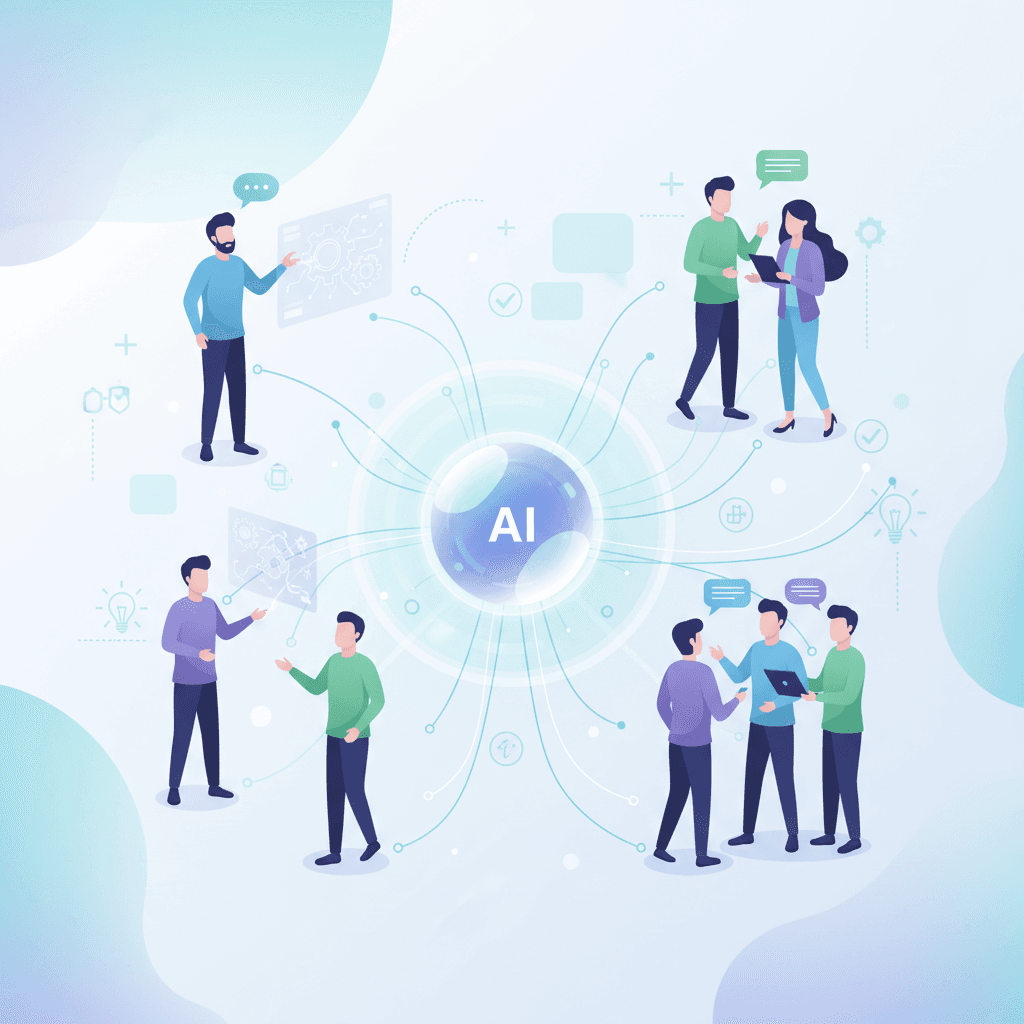Microsoft Copilot 'Groups' fundamentally redefines AI's role in teamwork
Copilot Groups makes AI a social facilitator for up to 32 users, driving real-time collaboration and collective intelligence.
October 23, 2025

Microsoft is fundamentally redefining the role of artificial intelligence in collaborative settings with the introduction of a new group chat feature for its Copilot assistant. Unveiled as a central component of the company's significant fall update, the feature, called "Groups," transforms Copilot from a solitary digital helper into an active participant within shared conversations.[1][2] This development allows for real-time collaboration among up to 32 individuals, positioning the AI as a central hub for brainstorming, planning, and co-creation.[3][4] The move signals a strategic push by Microsoft to make AI more social and integrated into the fabric of daily interactions, aiming to capture a new dimension of user engagement that extends beyond one-on-one queries and into the realm of multiplayer, AI-assisted teamwork.[1][5] This initiative is part of a broader vision articulated by Microsoft AI CEO Mustafa Suleyman, which prioritizes human-centered AI that connects people rather than isolating them.[6][4] The "Groups" feature is designed to address a wide array of collaborative scenarios, from friends organizing a trip to students tackling a group project or colleagues brainstorming ideas.[1][7]
The core functionality of Copilot Groups is designed to streamline and enhance group dynamics. Users can initiate a shared session and invite others via a simple link, allowing all participants to view and interact with the same AI conversation in real time.[8][4] Within these shared spaces, Copilot can perform a variety of roles to keep the group aligned and productive. It can summarize long conversation threads, propose different options for the group to consider, tally votes to facilitate decision-making, and even help delegate and split tasks among participants.[3][6][4] This transforms the AI from a passive information provider into an active facilitator that can manage the logistical and organizational overhead of group work. The goal is to create a seamless workspace where the AI augments the collective intelligence of the group, fostering a more efficient and creative environment.[5] This move directly addresses the growing demand for AI tools that can be integrated into collaborative workflows, a trend accelerated by the prevalence of remote and hybrid work models.[5]
In a curious strategic decision, Microsoft is initially launching Copilot Groups exclusively for the U.S. consumer version of the product, rather than for its business-focused Microsoft 365 Copilot.[1][7] This choice suggests a specific market strategy aimed at embedding Copilot into personal and social collaborations first. Jacob Andreou, CVP of product and growth at Microsoft AI, indicated that he anticipates smaller groups of two or three users will dominate the feature's use, rather than large, long-running group chats.[1][7] This approach could be a method to gather user data and refine the feature in lower-stakes environments before a wider enterprise rollout. While the application for workplace collaboration seems obvious, the company has only hinted at future integration into the Microsoft 365 ecosystem, stating that bringing such experiences to their enterprise customers will be important down the line.[1][7] This consumer-first strategy allows Microsoft to build a user base and habituate people to collaborative AI outside of the stringent security and compliance demands of the corporate world.
The introduction of Copilot Groups places Microsoft in a distinct position within the competitive AI landscape. While competitors like OpenAI have focused on advancing the raw capabilities of their models and Google has emphasized search integration, Microsoft is betting on personality and social collaboration as key differentiators.[1] This feature is part of a larger update that includes a more conversational "real talk" mode and an expressive avatar named Mico, all designed to make interacting with AI more human-like.[1][3] By embedding AI directly into group workflows, Microsoft is setting the stage to compete with established collaboration platforms like Slack and Google Workspace, which are also integrating AI features.[5] Market analysts project significant growth in the collaborative work management software market, with AI integration being a primary driver of that expansion.[5] Microsoft's strategy appears to be focused on user engagement and retention by creating a "stickier" experience where the AI is not just a tool, but an integral part of a team.[1]
In conclusion, the launch of the "Groups" feature in Microsoft Copilot represents a significant evolution in the company's AI strategy and a notable development for the industry as a whole. By enabling real-time collaboration for up to 32 users, Microsoft is pushing the boundaries of what an AI assistant can be, moving it from a personal productivity tool to a dynamic platform for collective intelligence.[1][5] The initial consumer-focused launch in the U.S. provides a testing ground for this new paradigm of social AI, with the potential for a transformative impact on how teams in both personal and professional spheres brainstorm, plan, and create.[8][7] As the AI market matures, features that enhance human connection and collaborative efficiency are poised to become critical battlegrounds, and with this update, Microsoft has made a bold statement about its vision for a more interconnected, AI-powered future.